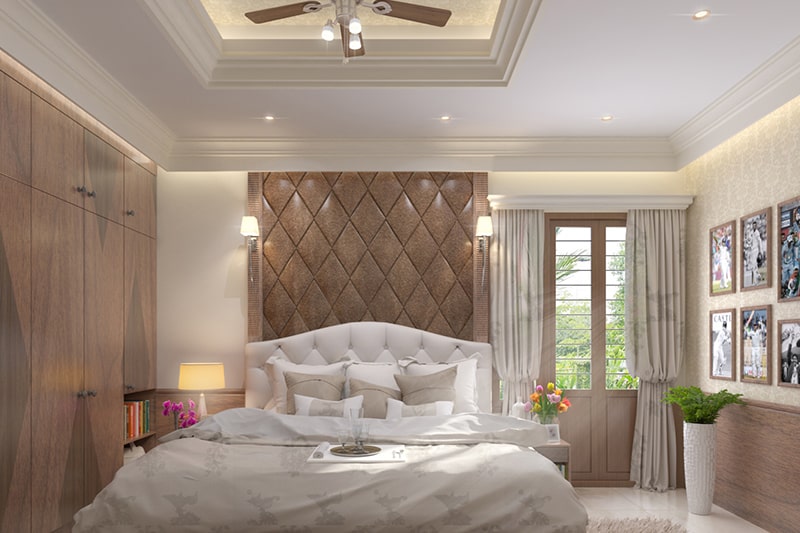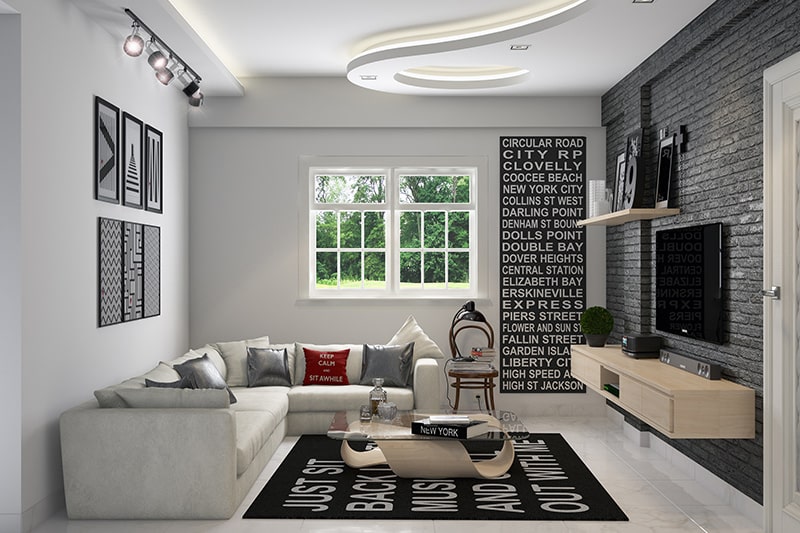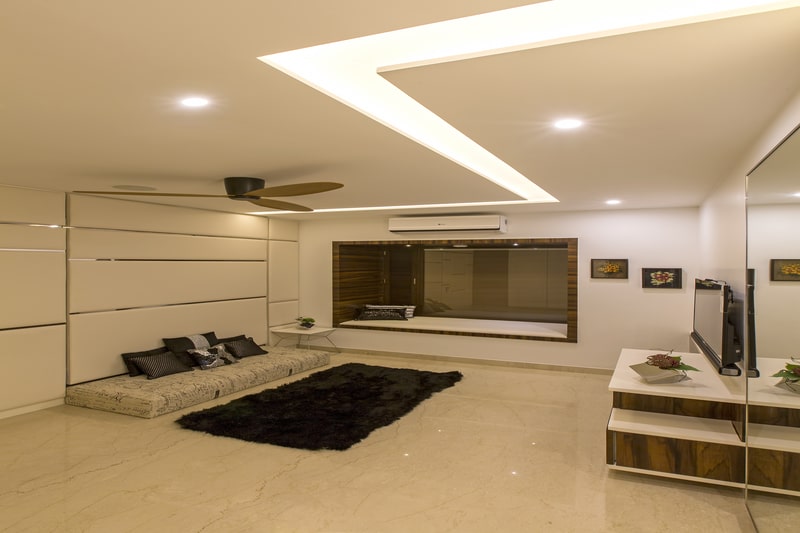False ceilings: Gypsum or POP? A comprehensive guide to help you choose.
Gone are the days of plain white boring ceilings. Modern home designs require you to get it right on all sides, including the top and bottom. Ceiling, literally, put the lid on the perfect picture that your home presents and false ceilings are just the trimming to elevate any ordinary room to a designer one. While design is important, equally so is the material used for your false ceiling, also known as a drop or suspended ceiling. And with so many options available today you may be at a loss as to what type to go for. When it comes to false ceilings the most common are gypsum board false ceilings and POP (Plaster of Paris) false ceiling.
Read on to find out the difference between the two and the pros and cons of each so you can make an informed decision while choosing the right false ceiling for the room you are redesigning or renovating.
POP (Plaster of Paris) False Ceilings
While POP board false ceilings are not so commonly found in metropolitan cities any more, they still have some advantages over the more common gypsum false ceilings. POP comes in a powder form which is mixed with water to form a paste that is then applied on a chicken mesh, treated and dried. These boards can be moulded to create different designs to perfectly fit the home owners taste and the ceiling in question. They are flexible to install in the corners and provide highly durable false ceilings that can last for years. They can also work out to be 25-50 percent cheaper than gypsum false ceilings.

However, the entire process of creating POP boards onsite is messy, wasteful and laborious. POP boards require adequate time for drying before installation – they can take upto a month to install. They require skilled labour to give a good clean finish and to make sure that the POP is mixed in the correct proportion.

Also Read: False Ceiling Designs For Hall
Gypsum Board False Ceilings
Gypsum boards come in a prefabricated form – they are manufactured in a factory and merely assembled onsite. These boards come in various sizes and can be easily installed, by attaching them to a metal framework. Since they are produced in factory conditions, the boards are consistent, quality-wise and provide a seamless finish with minimal joints. Installation of a gypsum false ceiling is efficient, mess-free and time-saving and gives a finesse to the ceiling that POP cannot replicate.

However, gypsum boards are not so flexible when it comes to design or accommodating corners. As they are ready-made boards, they cannot be moulded at will to create intricate designs on the ceiling. Uninstalling or repairing a gypsum board drop ceiling can be a tedious process which may require the entire ceiling to be broken down. Gypsum board false ceilings are also heavier on the pocket than those made from POP.

Both POP and gypsum board false ceilings are lightweight, heat-insulating and fire retardant. Both provide quality solutions to conceal lights, hide electrical cables, pipelines and AC ducts as well as fulfilling their primary aesthetic purpose. If you decide on POP boards, make sure you have efficient and skilled labour to install them. If you go with gypsum, ensure the boards are moisture-retardant to nullify the risk of fungal growth. You can also pair gypsum or POP boards with glass, paint or plywood to create unique design features. Whatever option you choose, do be sure to give a couple of rooms, if not more, a beautiful false ceiling to elevate your home to a modern yet cozy haven.
FAQs On Gypsum Vs POP
How do you prepare gypsum and POP for use?
For preparing gypsum or POP for use, measure the required quantity of powder and add it to a mixing bowl. Slowly add water to the powder and stir it continuously until it becomes a smooth paste with no lumps or bubbles. Once it turns into a smooth paste, allow it to sit for a few minutes. After a few minutes, stir the mixture again and add the desired color (if needed). Mix well until the color gets evenly distributed.
Can gypsum and POP be used interchangeably?
No. Gypsum and POP are similar materials but cannot be used interchangeably. Both gypsum and POP are made from the same base material, calcium sulfate, but they have different properties and are used for different purposes.
What are some common applications for gypsum and POP in construction?
Gypsum is a lightweight and easy-to-install building material that is used for ceilings and wall partitions. POP is used for interior walls and to create highly detailed and decorative ceilings.
Explore, More About
- False Ceiling Designs For Your Bedroom
- False Ceiling Design Ideas For Living Room
- Kitchen False Ceiling Design Ideas
 Select Category
Select Category














